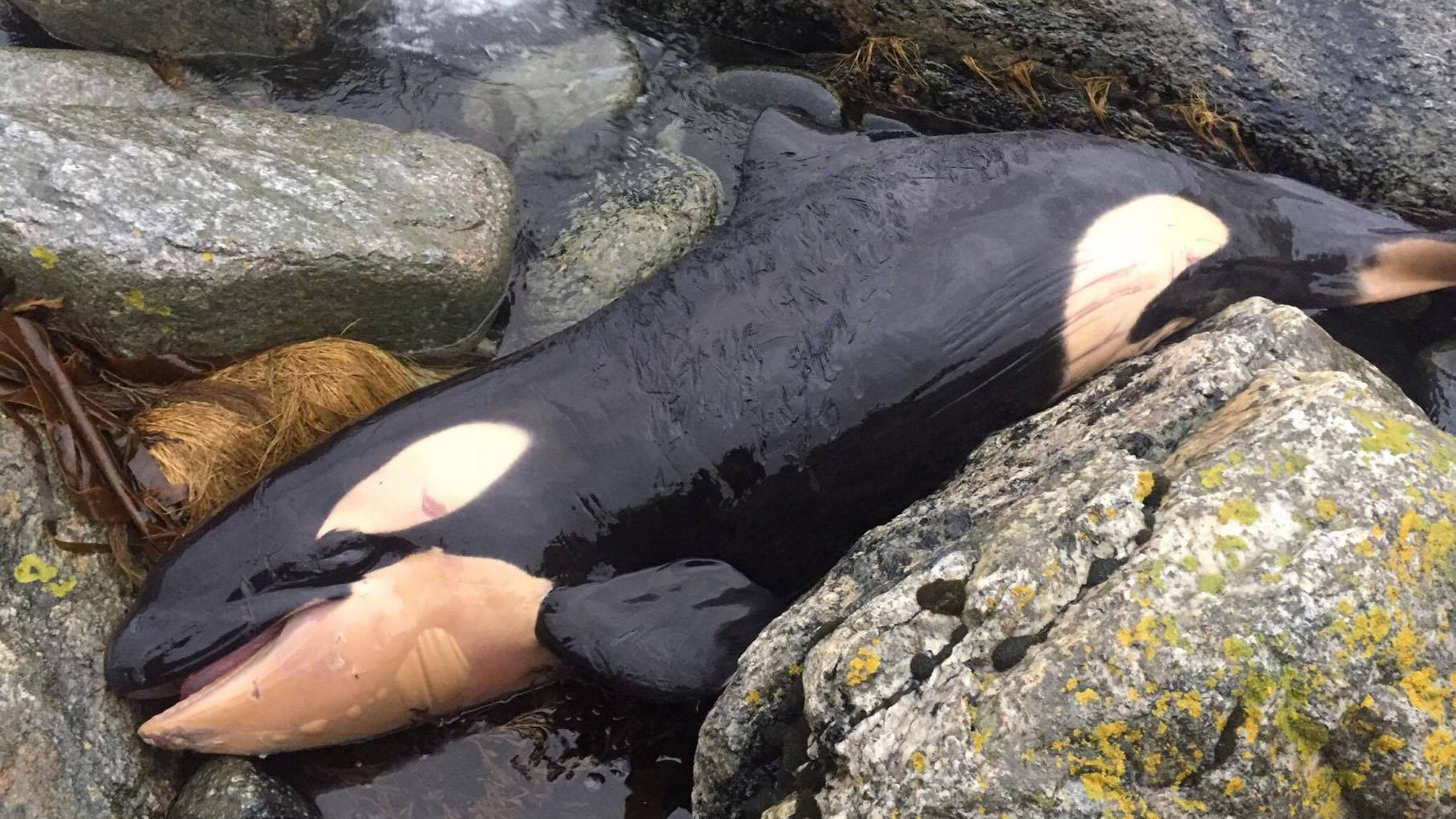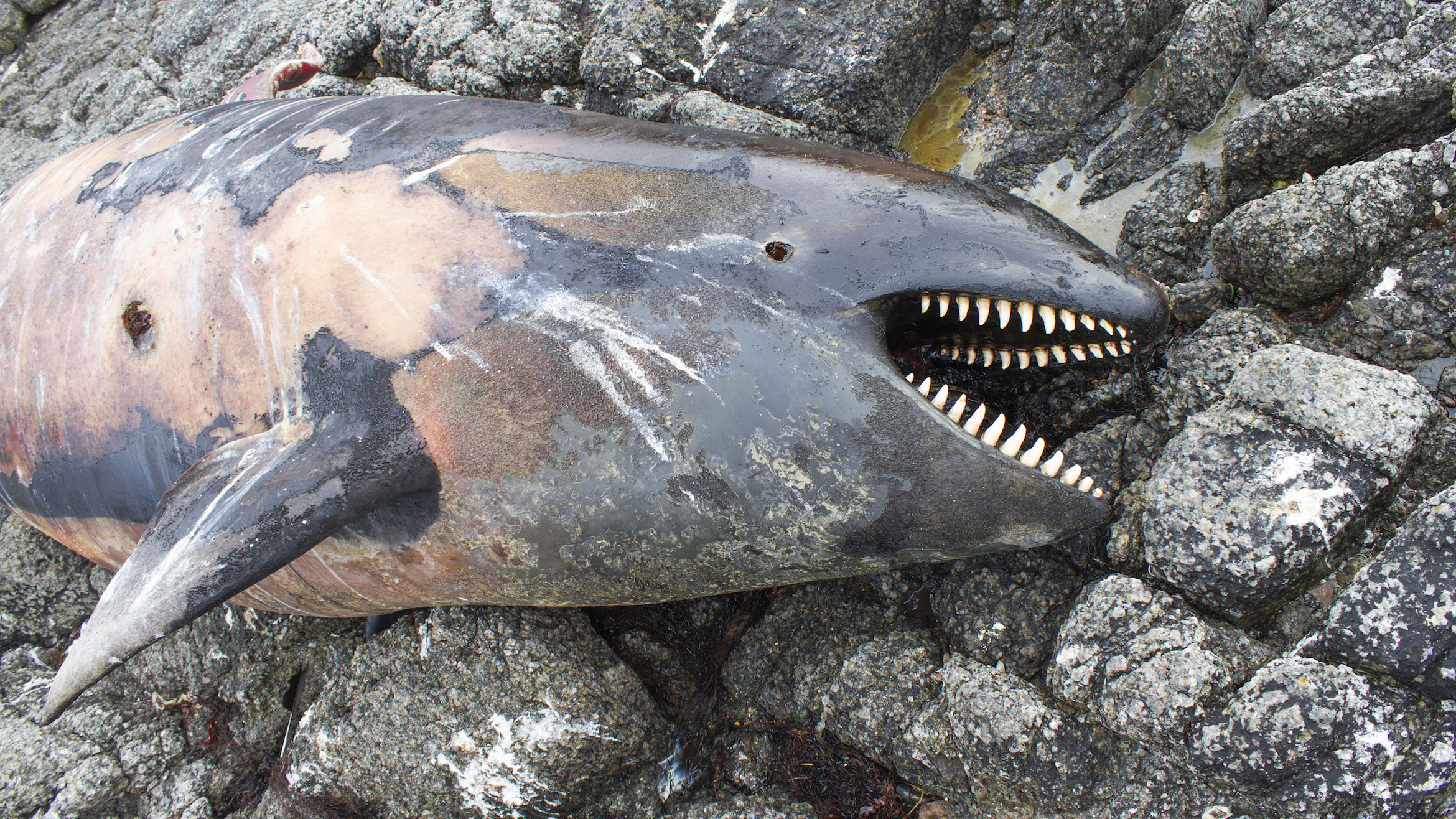Dead baby orca reveals harmful chemical levels in killer whales
Even banned PCB chemicals were found.

A necropsy of a 10-day-old orca that washed up in Norway in 2017 has revealed that even as calves, these iconic whales are full of harmful chemicals, a new study finds.
The young killer whale (Orcinus orca) was one of eight deceased orcas that researchers in Norway examined. Of these, seven (including the calf) had levels of the banned flame retardant polychlorinated biphenyl (PCB) that were high enough to cause health problems in the animals, the researchers found. And all had lower levels of some newer pollutants of which little is known and haven't yet been banned.
"Perhaps the most striking finding was that the neonate killer whale was as polluted as the adults," study co-researcher Eve Jourdain, founder and main investigator at Norwegian Orca Survey, told Live Science in an email. "This means that these new pollutants are also being passed on from mother to calf (maternal transfer through placenta and milking)."
Related: Image gallery: Russia's beautiful killer whales
The team carried out the animal autopsies to learn more about orca health in Norway's waters. Killer whales (which aren't actually whales, but the largest species of dolphin), are at the top of the food chain, meaning they're vulnerable to accumulating high levels of pollutants, Jourdain said. After the team had collected blubber and, in some cases, muscle and organ samples from eight whales that had died after stranding or getting caught in nets in Norway between 2015 and 2017, they got to work analyzing the cetacean tissues for human-made chemicals.
Overall, the team learned that "PCBs are still found at high levels in Norwegian killer whales, despite the fact that they were banned a long time ago," Jourdain said. The researchers also screened for new chemicals that aren't yet regulated, including brominated flame retardants (BFRs), and found the retardents pentabromotoluene (PBT) and hexabromobenzene (HBB) at low levels in the blubber of all eight whales, the researchers wrote in the study.

These chemicals were created as replacements for PCBs, but that's of little consolation to the whales. The study reveals that "these replacement chemicals have the same accumulation properties in killer whales' tissues" as PCBs do, Jourdain said.
Sign up for the Live Science daily newsletter now
Get the world’s most fascinating discoveries delivered straight to your inbox.
The researchers also looked at perfluoroalkyl substances (PFAS), known as "forever chemicals" because they don't break down like other chemicals in typical environments, and total mercury levels. While still concerning, PFAS and mercury levels were lower in the orca calf than in the adults, "suggesting less efficient maternal transfer of these substances," the researchers noted in the study.
Some of the chemicals examined in the study — the BFRs, PBTs, HBBs and PFAS — are widely used on in countless products, including cosmetics, ski wax, textiles, leather, paper and foam-based fire extinguishing agents, Jourdain said. "These may end up in the ocean through local streams, sewage waters, etc. [and] then climb high and accumulate in the food chain, until reaching [their] highest levels in top predators like killer whales."

Previous research has also found PCBs in orcas, including in Lulu, an adult killer whale whose body was discovered on an island off the coast of Scotland in 2016. The PCB concentrations in Lulu's blubber were 100 times higher than what scientists deem safe for marine mammals, meaning she had some of the highest levels of PCBs ever recorded in a whale, Live Science previously reported.
Scientists don't know how harmful these chemicals are to orcas, but studies have linked legacy contaminants, such as PCBs, to impairment of immune and reproductive systems in whales, she said. "This means that killer whales may be more vulnerable to pathogens and diseases and less likely to reproduce."
The fact that the newer replacement chemicals seem to behave in the same way as the legacy contaminants, in the sense that they both accumulate in whale tissues, also concerned the researchers. "This is a concern since they are not regulated yet and since we know little about how harmful to wildlife they may be," Jourdain said.
The study was published online May 18 in the journal Environmental Toxicology and Chemistry. The team also posted a video about their work on Facebook.
Originally published on Live Science.

Laura is the archaeology and Life's Little Mysteries editor at Live Science. She also reports on general science, including paleontology. Her work has appeared in The New York Times, Scholastic, Popular Science and Spectrum, a site on autism research. She has won multiple awards from the Society of Professional Journalists and the Washington Newspaper Publishers Association for her reporting at a weekly newspaper near Seattle. Laura holds a bachelor's degree in English literature and psychology from Washington University in St. Louis and a master's degree in science writing from NYU.









